
Whitecheeked Honeyeater (Phylidonyris nigra)
Named after 'New Holland' because the first Europeans to visit Australia were Dutch. Learn more about their history, habitat, behaviour, and threats in support of the ongoing battle to raise awareness and provide a voice for this species at risk.

Whitecheeked Honeyeater eBird
1 Summary 2 The White-cheeked Honeyeater ( Phylidonyris niger) inhabits the east coast and the south-west corner of Australia. It has a large white patch on its cheek, a brown eye, and a yellow panel on its wing. Sources and Credits (c) Marj Kibby, some rights reserved (CC BY-NC), http://www.flickr.com/photos/71589894@N00/2600067956
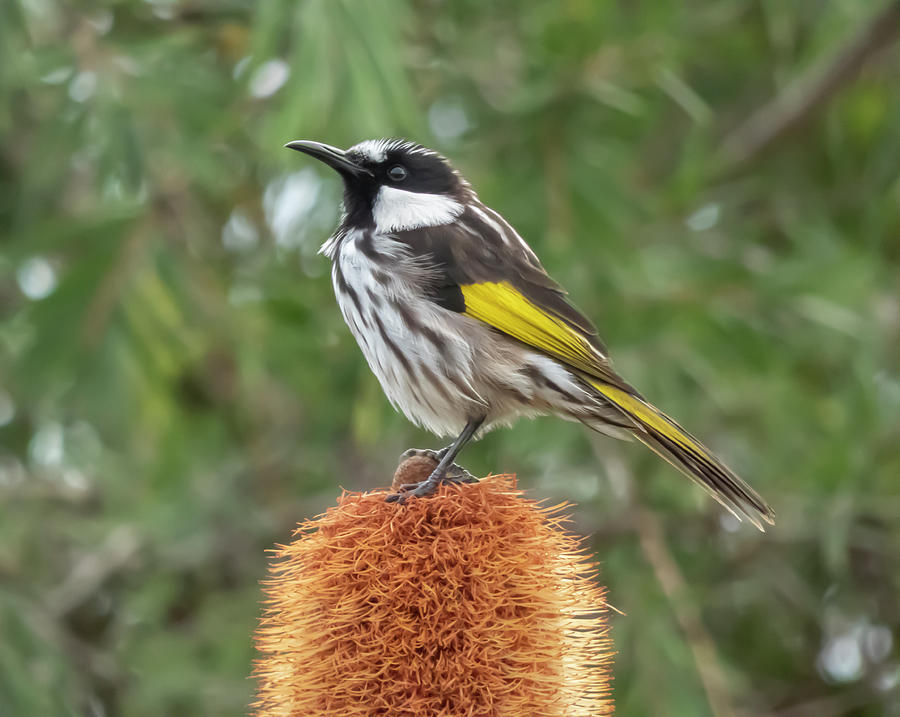
White Cheeked Honeyeater Photograph by Ryan Steptoe Fine Art America
Attractive bars appear on the front of the bird with the belly a plain white. As a tropical honeyeater, it is usually found near waterways and wetlands in flowering trees. Populations are restricted to northernmost Australia although there are some reports along the coast of Far North Queensland. Black Honeyeater (Sugomel nigrum)

Whitecheeked Honeyeater (Phylidonyris nigra)
The White-eared Honeyeater is a medium-sized honeyeater with a strong bill. It is olive-green above with lighter green underparts. It has a grey cap, a black face and bib (under bill) with a distinctive, contrasting white ear-patch. The sexes are similar in plumage but the males are larger. Young are duller and browner.

Avithera Whitecheeked Honeyeaters
Although they look very similar, there is not much competition between White-cheeked and New Holland Honeyeaters, as they choose different perching sites and have different nesting seasons. A medium-sized black and white honeyeater. It has large bright yellow tail and wing panels, with a large conspicuous white cheek patch on a mainly black head.
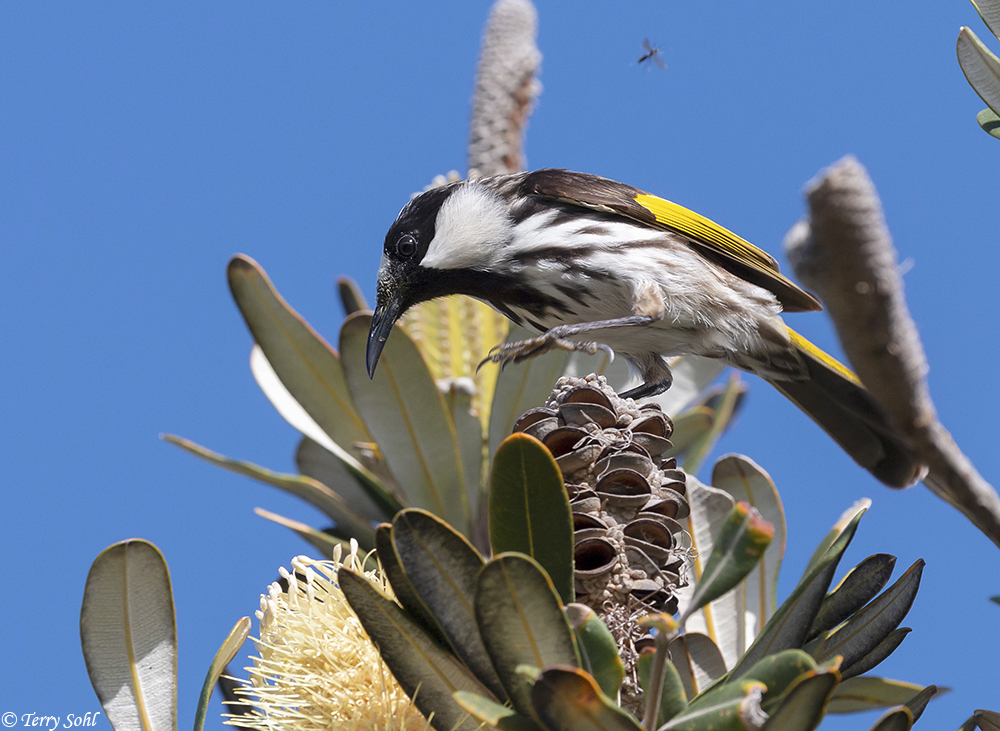
Whitecheeked Honeyeater Photos Photographs Pictures
The white-cheeked honeyeater is a medium-sized black and white honeyeater, with a long, sturdy bill that curves downwards. It has large bright-yellow tail and wing panels, with a large conspicuous white cheek-patch on a mainly black head. The eye is dark brown and it has a long, tapering, white brow-line..
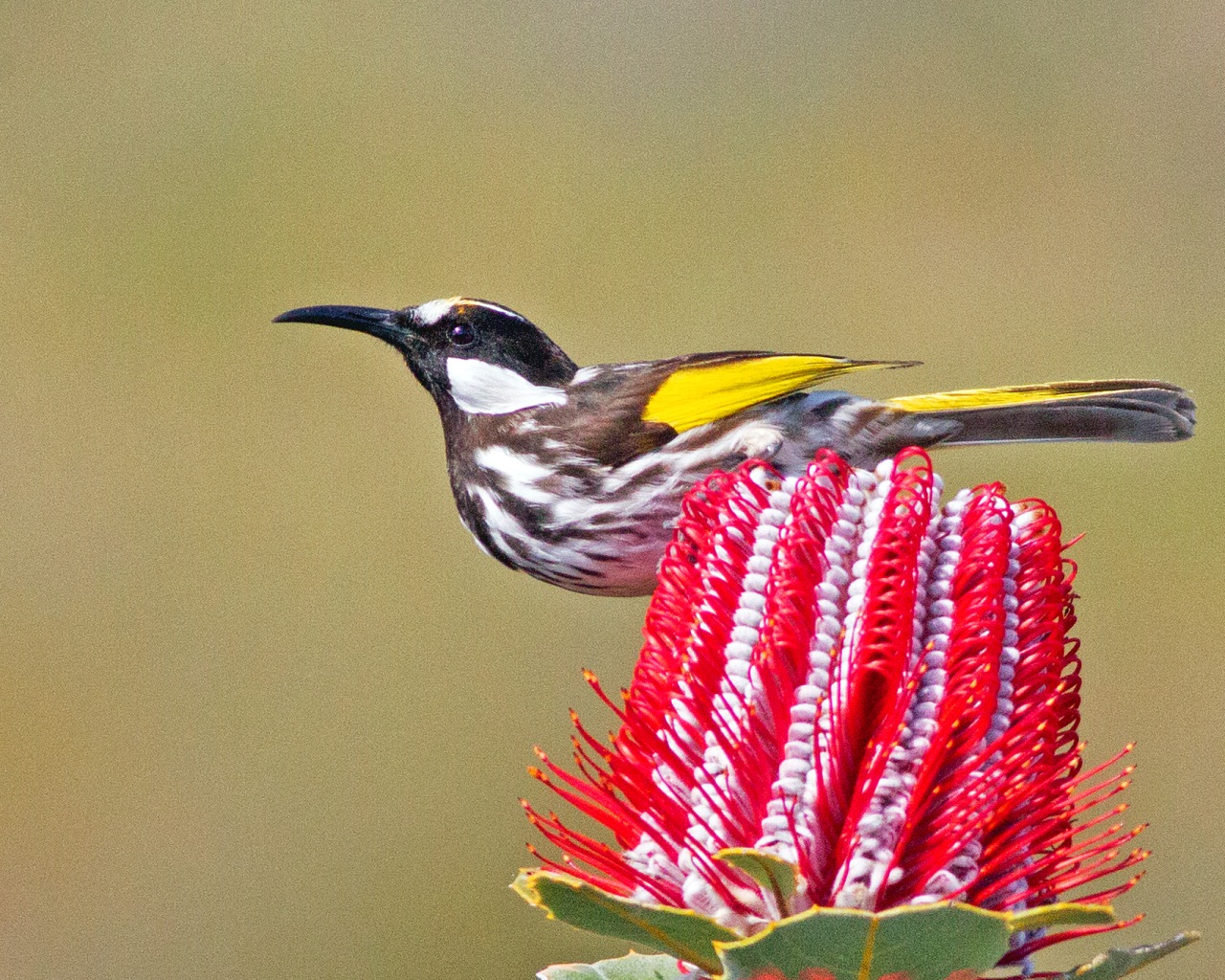
Whitecheeked Honeyeater • ReWild Perth
The white-cheeked honeyeater inhabits the east coast and the south-west corner of Australia. It has a large white patch on its cheek, brown eyes, and a yellow panel on its wing. Source: Wikipedia (0 votes) Photo powered by flickr.com. Classification Order: Passeriformes Family: Meliphagidae Genus:
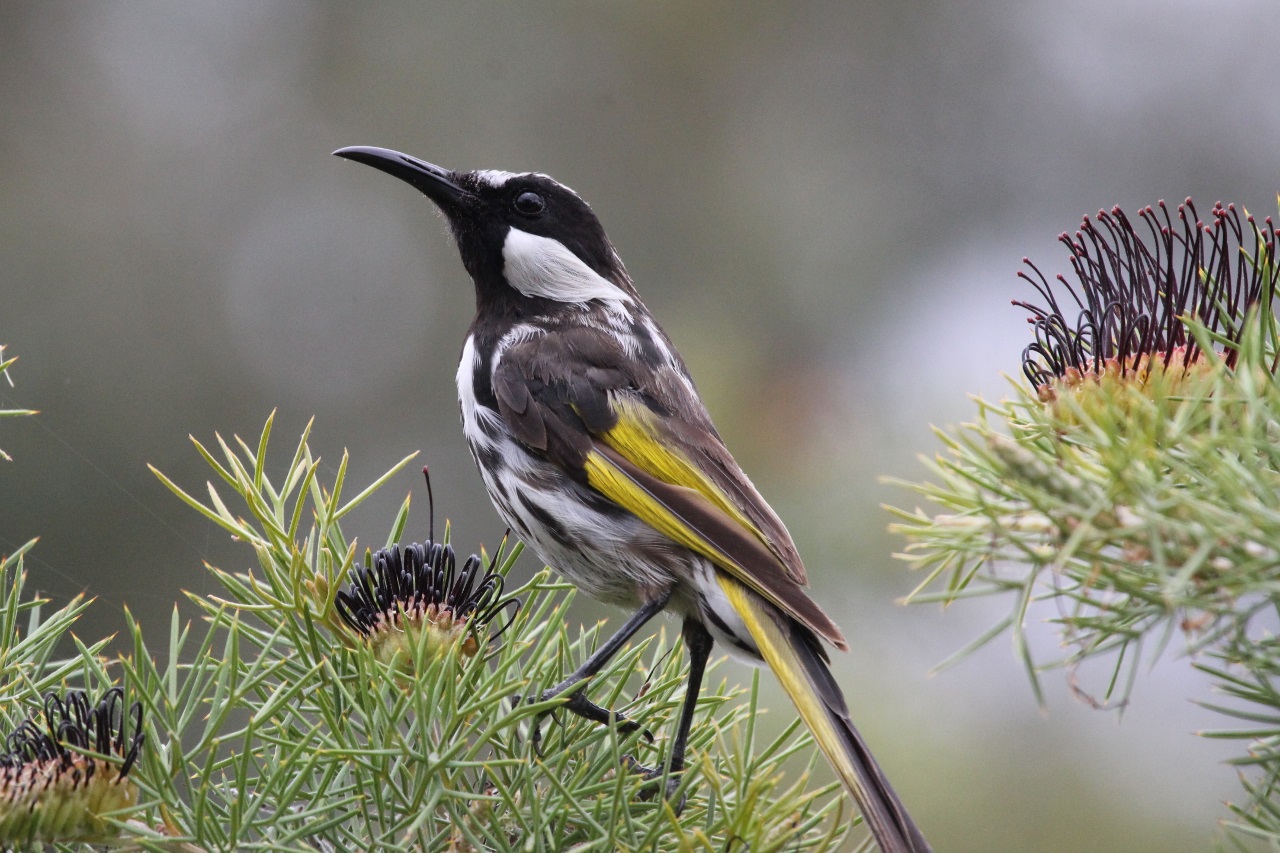
Whitecheeked Honeyeater • ReWild Perth
The white-cheeked honeyeater is a medium-sized black and white honeyeater, with a long, sturdy bill that curves downwards. It has large bright-yellow tail and wing panels, with a large conspicuous white cheek-patch on a mainly black head. The eye is dark brown and it has a long, tapering, white brow-line.
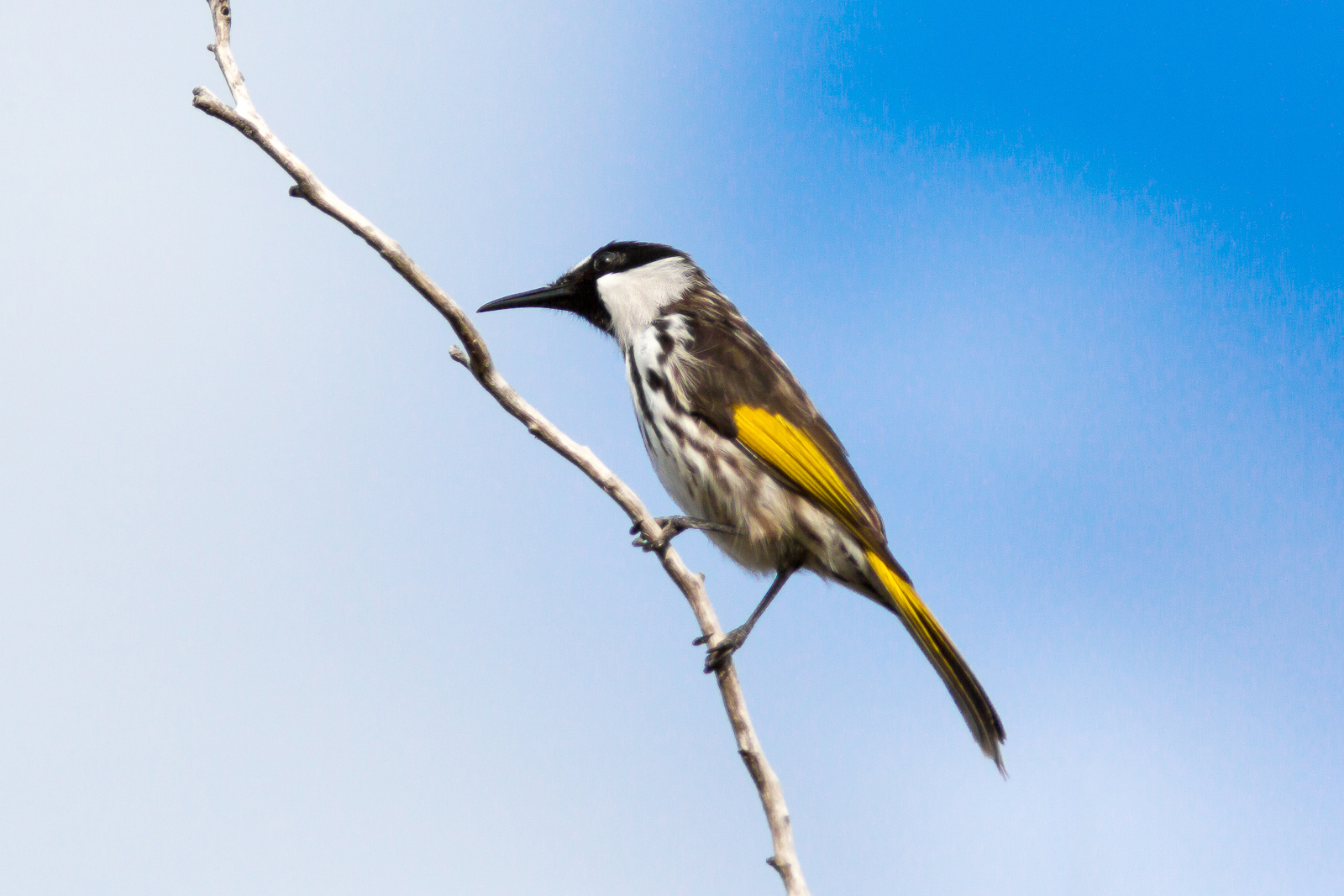
Photographing birds Whitecheeked Honeyeater Photographs, plants and other pursuits
Description: The White-cheeked Honeyeater is a medium-sized black and white honeyeater, with a long, sturdy bill that curves downwards. It has large bright yellow tail and wing panels, with a large conspicuous white cheek patch on a mainly black head. The eye is dark brown. Young birds are duller (brownish) and paler with softer, fluffier plumage.

Whitecheeked Honeyeater BIRDS in BACKYARDS
The white-cheeked honeyeater inhabits the east coast and the south-west corner of Australia. It has a large white patch on its cheek, brown eyes, and a yellow panel on its wing. Wikiwand is the world's leading Wikipedia reader for web and mobile.
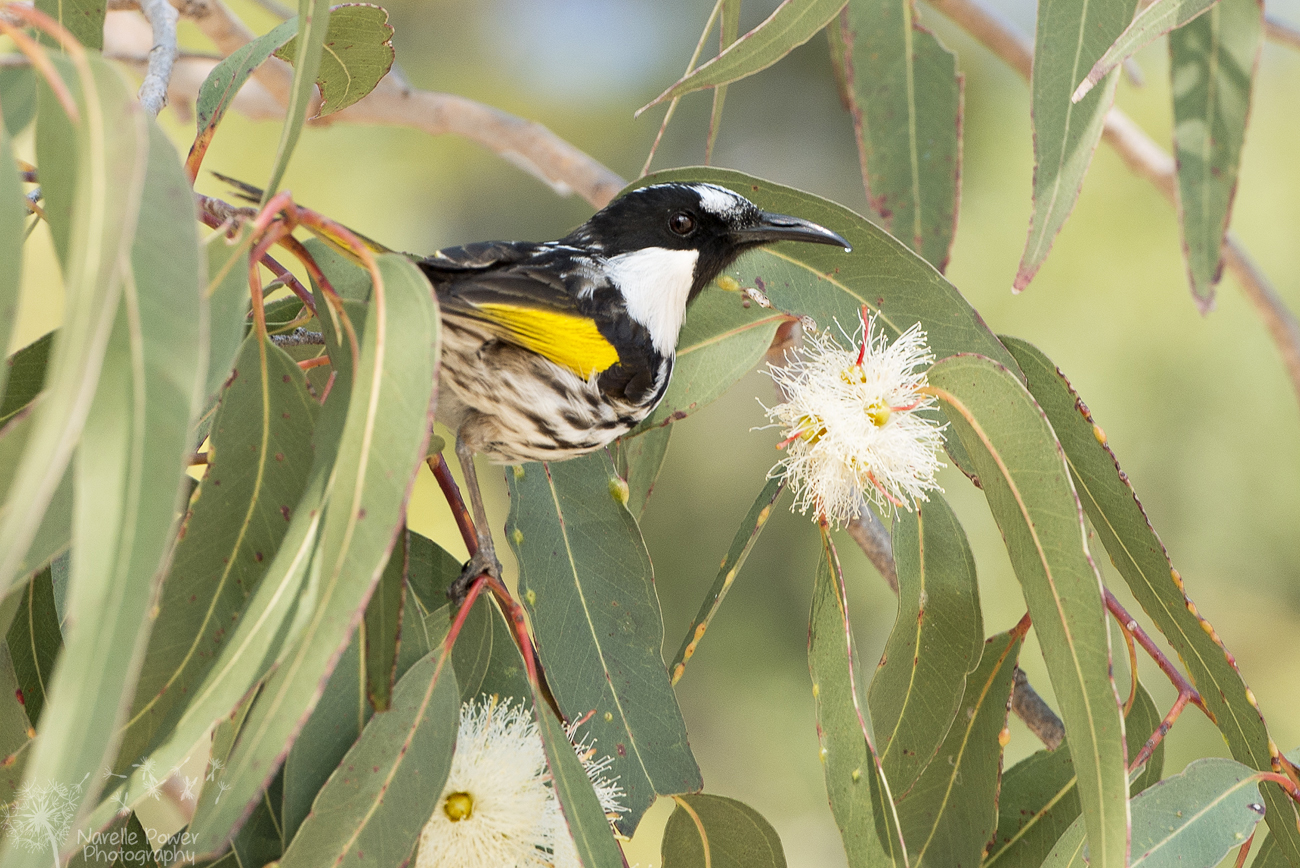
White cheeked honeyeater photo Narelle Power photos at
White-cheeked Honeyeaters are small nectar-eating birds. They have long, thin white eyebrows reaching from the frons to far behind the ears and large white cheek patches on the ear coverts. Otherwise the head and throat are black.

Whitecheeked Honeyeater eBird
White Cheeked Honeyeater. The facial markings of the White-cheeked Honeyeater are a key distinguishing feature and is colloquially known as the 'Moustached Honeyeater'. At first glance the White-cheeked Honeyeater appears similar to the New Holland Honeyeater, with which its range overlaps in south-eastern Queensland, eastern New South Wales.

Buy Whitecheeked Honeyeater Image Online Print & Canvas Photos Martin Willis Photographs
The White-cheeked Honeyeaters is a medium-sized black and white honeyeater, with a long, sturdy bill that curves downwards. It has a large bright yellow tail and wing panels, with a large conspicuous white cheek patch on a mainly black head. Table of Contents The eye is dark brown.

Whitecheeked Honeyeater (Image ID 47342)
The white-cheeked honeyeater is a medium-sized black and white honeyeater, with a long, sturdy bill that curves downwards. It has large bright-yellow tail and wing panels, with a large conspicuous white cheek-patch on a mainly black head. The eye is dark brown and it has a long, tapering, white brow-line.
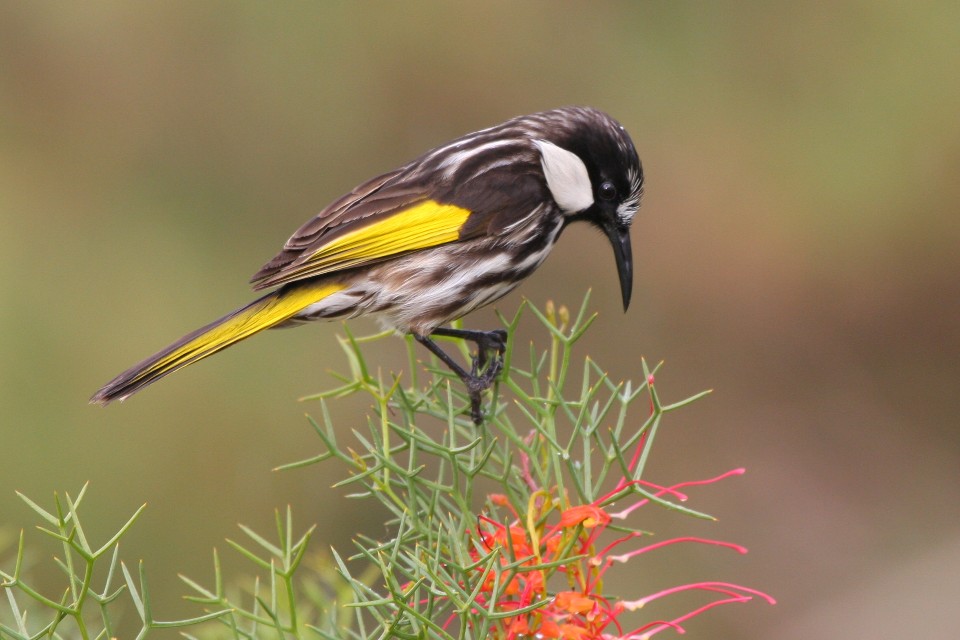
Whitecheeked Honeyeater [Larry 1/3] Large
Click here for more information about the Red List categories and criteria Justification of Red List category This species has a very large range, and hence does not approach the thresholds for Vulnerable under the range size criterion (Extent of Occurrence <20,000 km2 combined with a declining or fluctuating range size, habitat extent/quality, or population size and a small number of.

Whitecheeked Honeyeater The Australian Museum
The New Holland Honeyeater (18 cm) is one of the most common on Australia's southern coasts. They are aggressive honey consumers, here enjoying nectar from a Banskia flower. The Eastern Spinebill (16 cm) hovers hummingbird-like to feed on nectar in a suburban garden. Common in Australia's south-east coast gardens, forests and heaths.